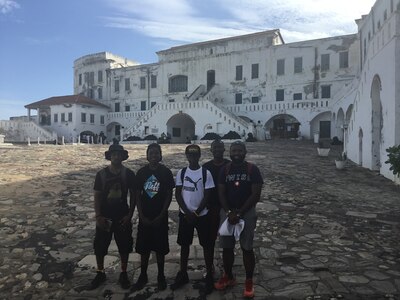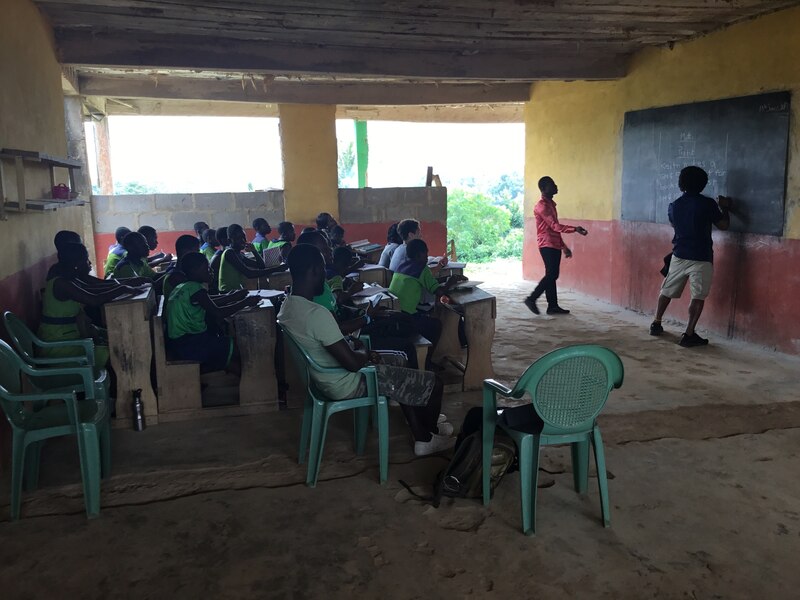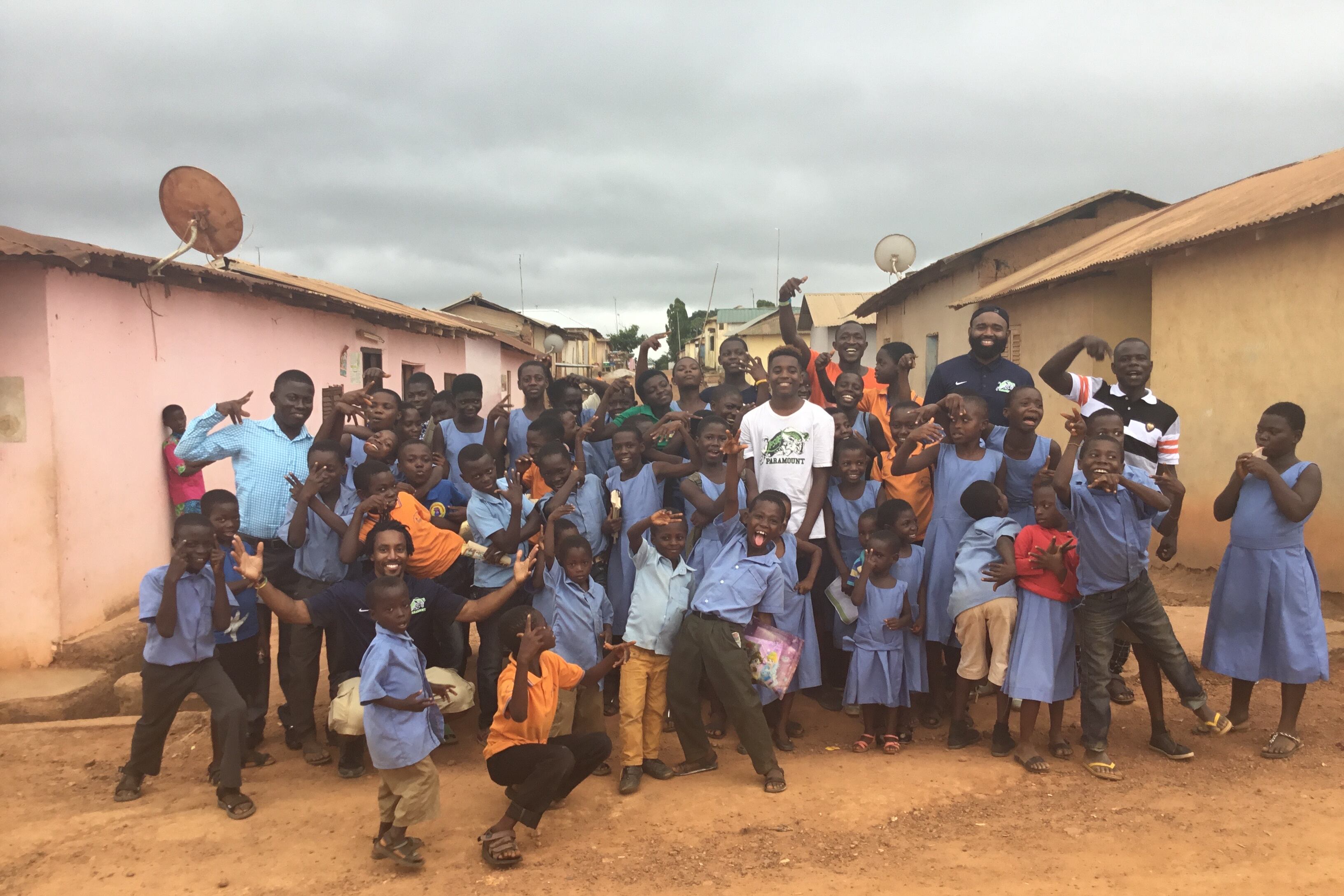When Paramount Brookside teacher Keith Thomas came back from a trip to Ghana, he knew he had to take his students there.
He wanted them to have the opportunity to travel internationally. He wanted them to truly experience an African country, so they could see it beyond the popularized stereotypes in movies.
“A lot of times there’s a misconception that Africa is just lions running around,” said Thomas, who teaches middle-school math at the Indianapolis charter school.
Thomas has led two study abroad trips to Ghana, each time taking two students and another staff member to intentionally keep the group small. The coronavirus pandemic prevented the school from taking another trip this summer.
Thomas, who is going into his 10th year of teaching, recently won an excellence in teaching award from Teach for America Indianapolis. He spoke to Chalkbeat about why he started the study abroad program, how he builds relationships with students, and why he feels conflicted about returning to classrooms amid the health crisis.
This interview has been lightly edited for clarity and length.
Tell us about your study abroad trips to Ghana. Where did the idea come from? What do you hope students learn?
A few years back, I was part of the Teacher Creativity Fellowship from the Lilly Endowment, and I had a fully funded trip to Ghana. I wanted to go to Ghana because I’d traveled internationally before, but I’d never been to Africa. Ghana had more slave castles than anywhere else in the world. The castles were the places where they held slaves before they sent them to the Western Hemisphere. A lot of Black people visit slave castles as a spiritual pilgrimage. My goal was to visit as many as possible.
It was pretty intense. There were a lot of times when I got choked up, like when you’re standing in a cell, not much bigger than a room, where they kept hundreds of slaves at a time. It still had a smell to it. So you just knew you were standing in one of the worst places in world history.
After I got back, I thought it would be a cool idea to take students to Ghana, so I brought it to administrators and we made it happen for the school a year later.

When I went with the Teacher Creativity Fellowship, I was 30 years old. And we’re taking kids who are 13 or 14.
I asked one student, “Have you ever traveled before? Have you ever spent the night other than with your mom?” And he said, “Yeah, I spent the night at my aunt’s house before, but she lives around the corner.” The trip is free for the kids, except spending money for souvenirs.
We made an itinerary, and we would have the kids look up the places we were going the next day. After we went, we’d have the kids journal about their experiences. They talked a lot about the food. One thing I was intentional about was making sure we broke down some of those negative stereotypes about what Africa is, so kids can see it has cities and cars and schools just like us. A lot of times there’s a misconception that Africa is just lions running around.
We did visit the slave castles — the Cape Coast slave castle is a UNESCO World Heritage site. We saw some other places too. Ghana has one of the few canopy walks in the world — it’s a system of suspended bridges, hundreds of feet high in the middle of the forest.
It was important to me that they interact with other students. I had my students go to different schools, sit in on a couple of lessons, and I would participate and co-teach a lesson too. They got to see some of the similarities and differences in their school experience.

You have been recognized for helping your students make significant academic progress in math. What part of your teaching approach helps your students the most?
It always starts with relationships. Just being able to over time create and have good relationships with my students and their families sets the foundation for successful school years. Another thing is having unwavering expectations of excellence. On a regular basis, I reiterate to my students that I want them to be the best students, and it’s both of our responsibilities to make sure we do that — day in, and day out. My students and their families know I’m going to hold them accountable, and I won’t let anything disrupt learning in my classroom.
How are you feeling about the upcoming school year and return to classrooms during the coronavirus pandemic?
One word that a friend of mine used to best sum it up for me was “conflicted.” The reason I say conflicted is, as an educator, I know kids are going to learn best in front of their teachers. There’s no way around that. But our primary goal is to provide a safe learning environment for the students.
We are concerned for the kids, but we’re in it too. We have families, we have parents, we have students of our own. It’s our whole school community that could potentially be put at risk.
What challenges did you face in teaching remotely?
My biggest challenge is accountability. When students are in my class, they can’t opt out as far as working on materials or assignments. Online, we don’t have the same accountability because they’re not in person. They have the option to not get online or do any of their assignments.
What part of your job is most difficult?
The most difficult part is seeing former students who were excellent and motivated students several years down the line and they’re not living up to their potential. That’s one of the hardest things to deal with. They go on to other schools, they grow up a little bit, and they’re just not the same student who they were or possibly could be, just because of a change in environment. That’s just always a little heartbreaking.
What was your biggest misconception that you initially brought to teaching?
I was always a really good math student. When I would solve math problems, I was used to skipping steps. I came in with the expectation that kids would know certain things. But in order for them to be successful, you have to explain every step along the way and treat it as though they don’t know everything. I would overlook some smaller details thinking kids already knew certain things. I learned that early on, though, in the first year.
Was there a moment when you decided to become a teacher?
I went to school to be an accountant. My senior year, I was in a cohort and we’re taking all these different accounting electives together. We would go to class, then go to the library and have study groups. In the study groups, I realized I was teaching all my classmates what our professors had just taught us. That’s when I realized I need to be a teacher, and I applied to Teach for America.
What’s the best advice you ever received — and how have you put it into action?
A quote that I heard that has always stuck with me is, “Students don’t care what you know until they know that you care.” That’s why it’s important to build those positive relationships. Once they know you care, they will care about what you’re teaching them.







